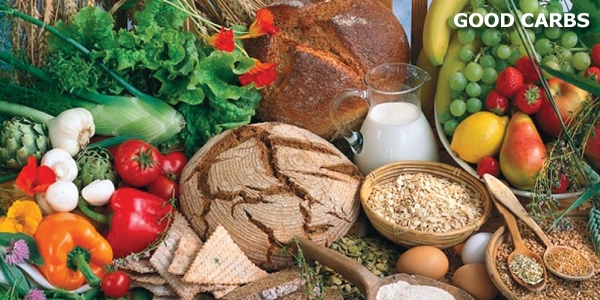Most Americans get very little nutrition in their daily diets. According to the President’s Council on Fitness, the typical American diet exceeds the recommended intake limits in four categories, including fats and added sugars, sodium, saturated fats, and refined grains. It also reports that most Americans eat less than the recommended amounts of fruits and vegetables, and 90% of all Americans eat more sodium than what is recommended for a healthy diet. However, perhaps what is most shocking is that the average calorie consumption has increased by 600 calories per day in the past four decades! If one of your goals this year is to eat a healthier diet, here are some tips for living a healthy life that will help you make better decisions every day from here on out so that you can look forward to a long and healthy future.
Good fat vs. bad fat
Wait … there’s good fat? Absolutely! There’s also good cholesterol and bad cholesterol. One of the most important things you need to know if you’re going to eat better and live a long, healthy life is to know the difference between the good fats and the bad ones. One simple fact of life is that all of us need to consume fats if we’re going to have healthy bodies. The good fats are those that help lower bad cholesterol while raising good cholesterol. Monounsaturated fats are good fats, and so too are polyunsaturated fats. Many of these can be found in such foods as fish oil, olive oil, and nuts. Trans fats are bad fats. In fact, they’re the worst kind of fats. These are the hydrogenated fats that can be found in margarines. They should be avoided. Be sure to read the ingredient labels of everything you buy in order to stay away from Trans fats.
Good carbs vs. bad carbs
Just like there are good fats and bad fats, so too are there good carbs and bad carbs. Simple carbs are the bad ones. These include flour and refined sugar. They’re bad because they are quickly absorbed in the digestive tract, causing the body to release large, unmanageable amounts of insulin due to carb overload. Complex carbs are the good carbs that your body needs because they are digested more slowly, not releasing that quick overload of insulin that simple carbs do. Processed foods contain bad carbs, so it’s important to greatly limit consumption of these. Complex carbs include foods such as vegetables, oats, and unprocessed grains. Brown rice is an example of a complex carb.
Lean, mean protein
Lean proteins are essential to eating healthy. The goal is to fill about 10% to 30% of your plate with lean proteins that help build muscle and give you endurance. Examples of these include lean fish such as halibut, flounder, and sole, as well as lean meats such as lean pork, lean beef, chicken, and duck.
Fruits and veggies
Be sure to eat four to five servings of fruits and vegetables every day. If this sounds like you’ll be spending half your day just chomping on fruits and veggies, consider buying a juicer or one of those nifty little personal blenders in order to mix yourself up a delicious and healthy smoothie each morning.
Moderation
Moderation is key when it comes to eating healthy. Most Americans don’t come anywhere near eating enough fruits and vegetables, especially since most of our foods are processed. But when it comes to foods that aren’t so good for you such as refined sugars and processed carbs, it’s nice to know you can eat these so long as you limit your intake. And by all means, if there’s a food you love that you just can’t eat moderately, you likely should avoid it altogether.
Did you know that, since the 1970s, the number of fast food restaurants in the United States has more than doubled? It’s true. But it’s also true that living a healthy life can include going to fast food restaurants, eating a little dessert now and again, and even eating a little more of the foods you love on holidays. The most important tips to living a healthy life are: (1) learning to eat the proper foods that contain the proper amount of nutritional value; and (2) learning to cut portions to their proper size. If you want to live a long, healthy, and vibrant life, you can’t do it eating a poor diet that includes 600 calories more a day than your body needs and foods that make you feel sluggish because they’re just too hard to digest. For more tips on living healthy, talk to your doctor or consult a nutritionist.




